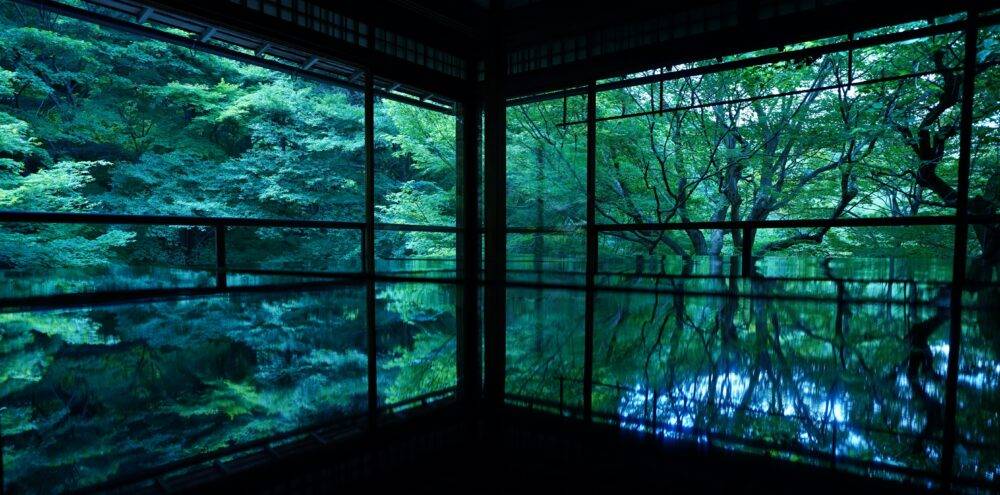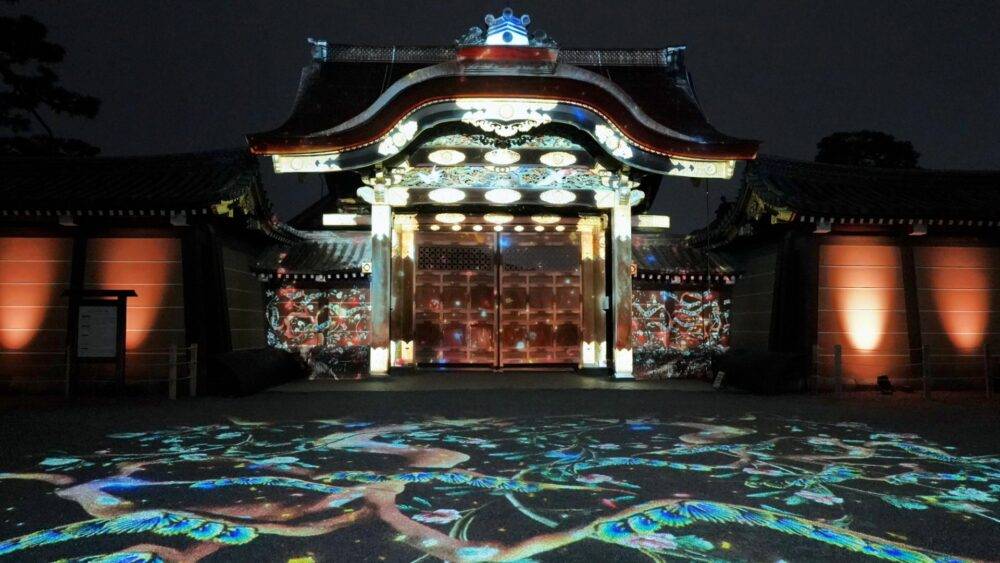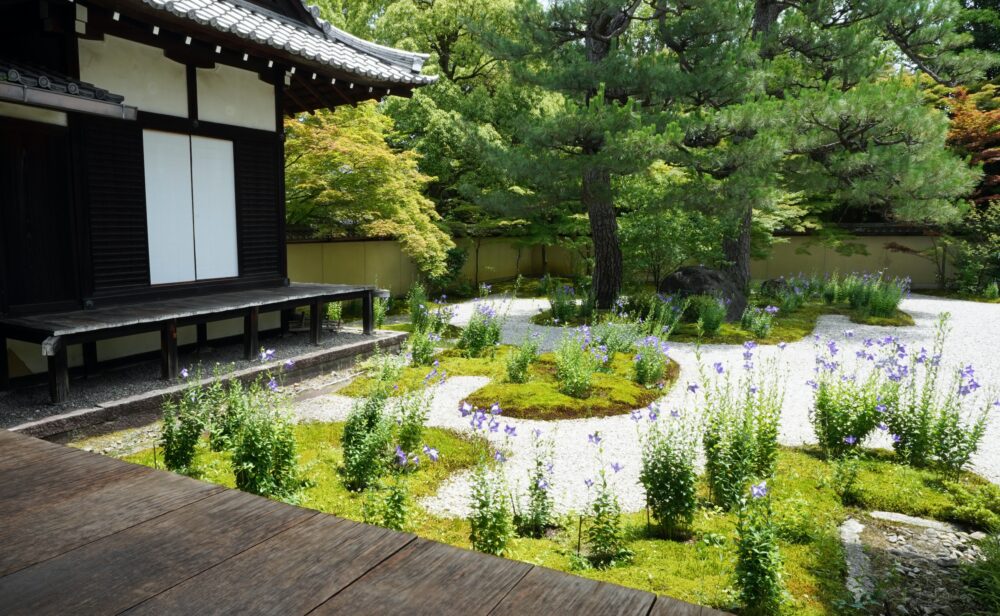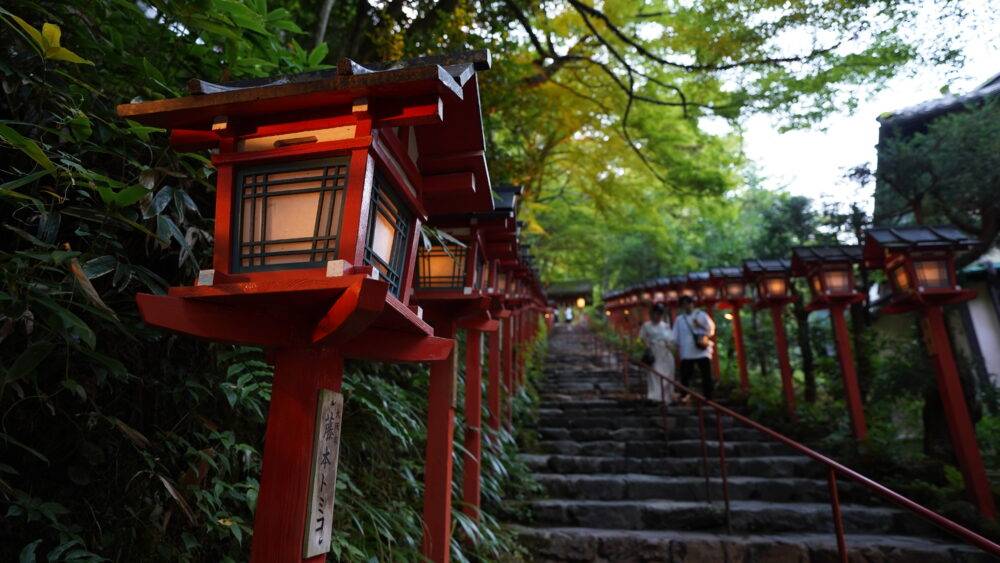Kyoto’s 5 Best Gardens in Rainy Season in 2025
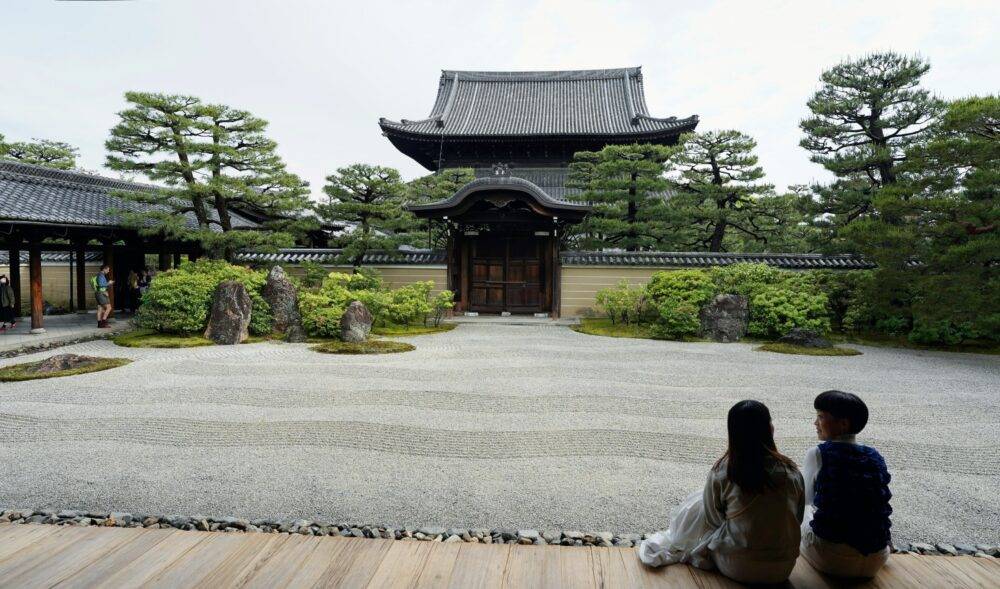
Japan has a rainy season, with Kyoto experiencing daily showers from late May to early July. While this is often considered a dreary time of year, it also has its own unique charm. Japanese gardens, especially those with moss as a central feature, come alive during the rainy season, as the moss takes on a vibrant emerald hue. In addition, hydrangeas are a symbol of the rainy season, and their beauty is enhanced when they are drenched in rain.
Here are top 5 Japanese gardens in Kyoto that can be enjoyed during the rainy season.
Murinan
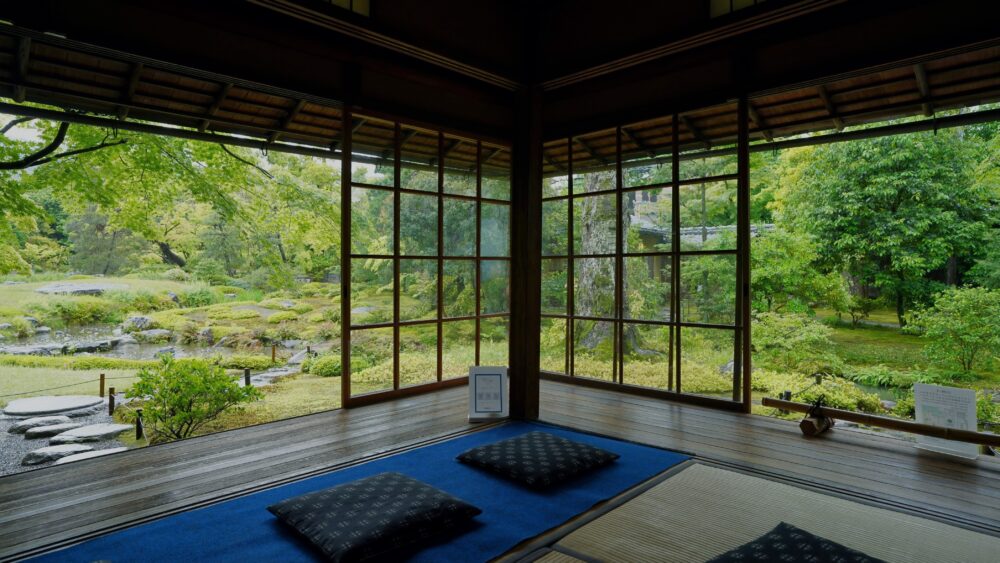
Murinan, located in the eastern part of Kyoto, was originally built in 1896 as a villa for Yamagata Aritomo, who was a prominent statesman during Japan’s Meiji Restoration. The garden is a harmonious blend of traditional Japanese architecture, including a main house, a Western-style building, and a teahouse, all set in a serene Japanese garden.
Murin-an Garden’s View from the Teahouse
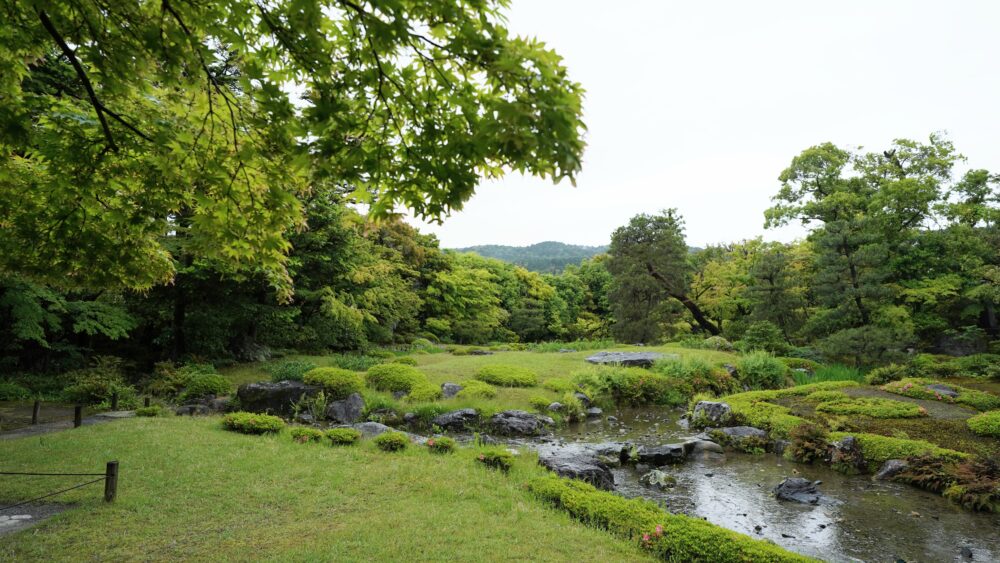
The garden is a strolling garden that can be walked around, and is consists only of moss, lawn, and trees growing on the mountain. The background of Higashiyama in the back landscapes gives the impression of depth, as if it extends from there, and a stream flows through it, creating a landscape like a mountain stream. As the owner, Yamagata Aritomo, said that the garden is most beautiful on a rainy day, especially in the rainy season, when the moss and new leaves of the maple trees turn a beautiful green color and the whole garden is fantastical. In addition, a special ticket pattern is distributed on rainy days, and sweets in the shape of raindrops are also served.
Information
Open Hours
Visits to Murin-an require reservations and are by the hour.
Please make your reservation through the following link.
https://select-type.com/rsv/index.php
| Period | Time |
|---|---|
| April to September | 9:00a.m. – 6:00p.m. |
| October to March | 9:00a.m. – 5:00p.m. |
Entrance Fee
| Period | Price |
|---|---|
| Excluding the period mentioned below | 600yen |
| Marchi 29th to 31st, April 1st to 13th, 26th to 30th, May 1st to June 1st, | 900yen |
| January 1st to 3rd, March 28th to 31st, October 11th to 19th November 1st to 14th, December 1st to 7th | 1,000yen |
| November 15th to December 7th | 1,500yen |
Adress
〒606-8437 Kyoto, Sakyo Ward, Nanzenji Kusakawacho, 31
Link
Official website
https://murin-an.jp/en/
Kenninji Temple
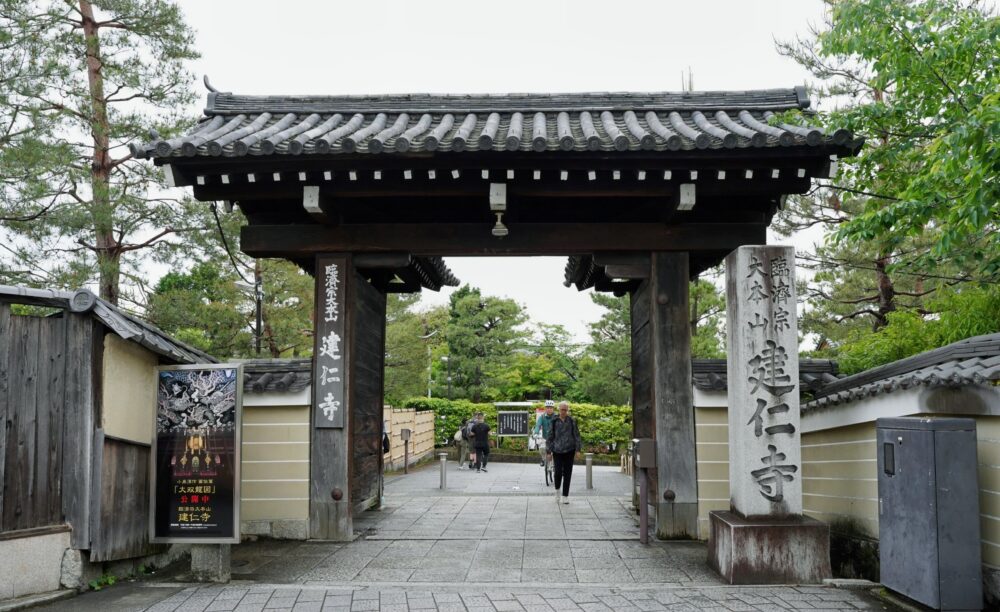
Kenninji Temple, located in the eastern part of Kyoto, is the main temple of the Kenninji School of the Rinzai sect. The temple’s name comes from the fact that the year it was built, 1202, was the second year of the Kennin era.
With over 800 years of history, the temple complex encompasses the main hall and numerous sub-temples. Honbo( the main hall) houses a treasure trove of artifacts, including the Raijin and Fujin (wind and thunder deities) screens, dragon fusuma (sliding doors), and a double dragon ceiling.
Daioen Garden, Tranquil Japanese Dry Garden

Kenninji Temple has a variety of gardens, the most notable of which is the vast Japanese dry garden in Honbo, called Daioen. Centered around the Karamon Gate (wavy roof gate), this serene expanse is adorned with meticulously arranged stones, white granite gravel, green moss, and stately black pines on either side. Visitors can admire the garden’s tranquil beauty of the garden from the veranda of the main hall, where time seems to slip away as they immerse themselves in the peaceful ambiance.
Information
Open Hours
10:00a.m. – 5:00p.m.
*The reception close at 4:30p.m.
Entrance fee
Honbo(Main hall)
| Adults | 800yen |
| Students from high school to elementary school | 500yen |
| Children under the age of elementary school | Free |
Adress
〒605-0811 Kyoto, Higashiyama Ward, Komatsucho, 584
Link
Official Website
https://www.kenninji.jp(Only Japanese text)
Rozanji temple
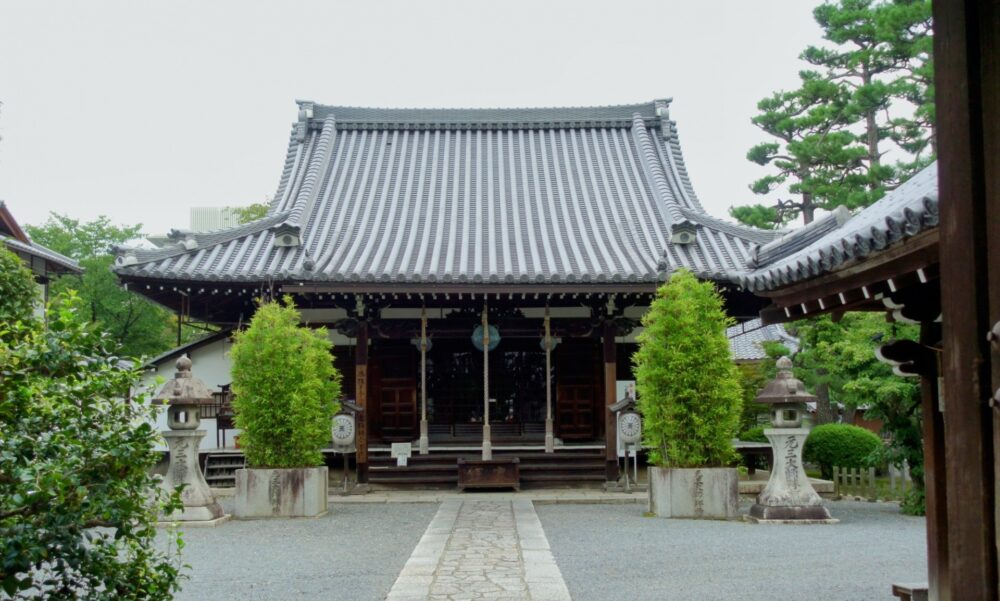
Rozanji Temple, located in the northern part of Kyoto city, is a historic Tendai Buddhist temple. This temple was founded around 940 by the revered monk Ryogen, who was the 18th head abbot of Enryaku-ji in the 10th century. In recent years, Rozanji Temple has received considerable attention as the former residence and writing place of Murasaki Shikibu, the celebrated author of Japan’s oldest novel, The Tale of Genji. The temple houses a collection of exhibits related to “The Tale of Genji,” including exquisite scrolls and artifacts.
Genji garden, Fairy Tail Garden
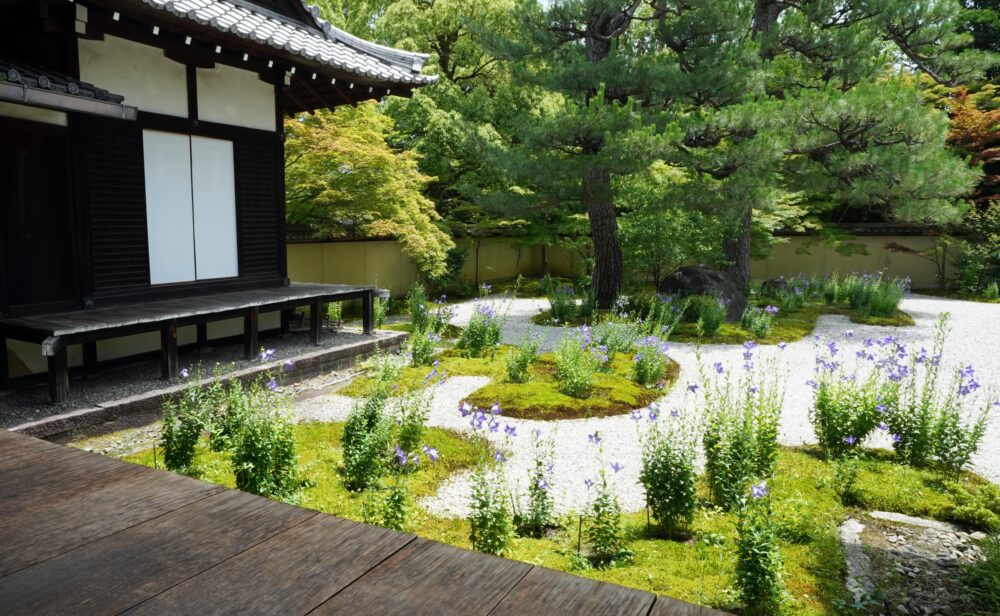
As visitors enter the main hall, a Japanese dry garden comes into view on the right. This garden is designed with white granite gravel, known for its high reflectivity, as the base, and features circular patches of moss, evoking the image of clouds floating in the sky.This garden is called “Genji Garden” and beautiful flowers inspired by the story of Hikaru Genji grow there. The most famous are the balloon flowers, which unfurl their star-shaped blossoms in shades of enchanting purple. They bloom from June to July , adding a touch of ethereal beauty to the scene.
Information
Open hours
9:00a.m. – 4:00p.m.
Holidays
January 1st, February 1st to 9th
Entrance fee
Adults : 500yen
Students from high school to elementary school : 400yen
Adress
397 Kitanobecho, Kamigyo Ward, Kyoto, 602-0852
Link
Official website
https://www7a.biglobe.ne.jp/~rozanji/(Only Japanese text)
Mimurotoji temple
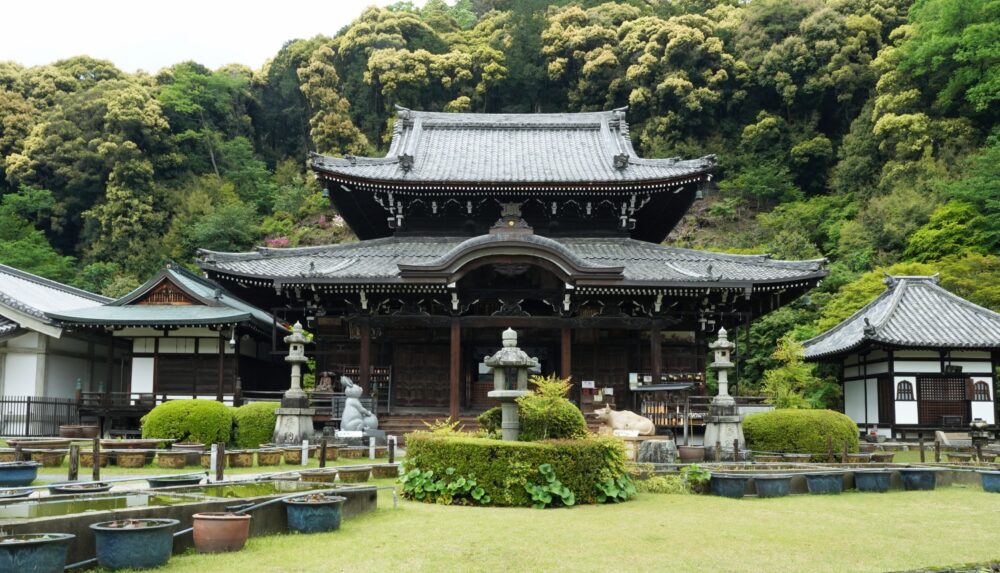
Mimurotoji is a Buddhist temple located in Uji City, southeastern Kyoto. The temple was founded in 770 by order of Emperor Konin. Despite suffering multiple fires and the destruction of its main buildings, the temple has been repeatedly rebuilt. Within its precincts stand many historical structures, including the Edo-period Main Hall (pictured above) with its multi-tiered Irimoya roof, and the Amida Hall housing Amida Triad statues dating back to the Heian period.
Yorakuei Grden, 50 varieties and about 10,000 hydrangeas
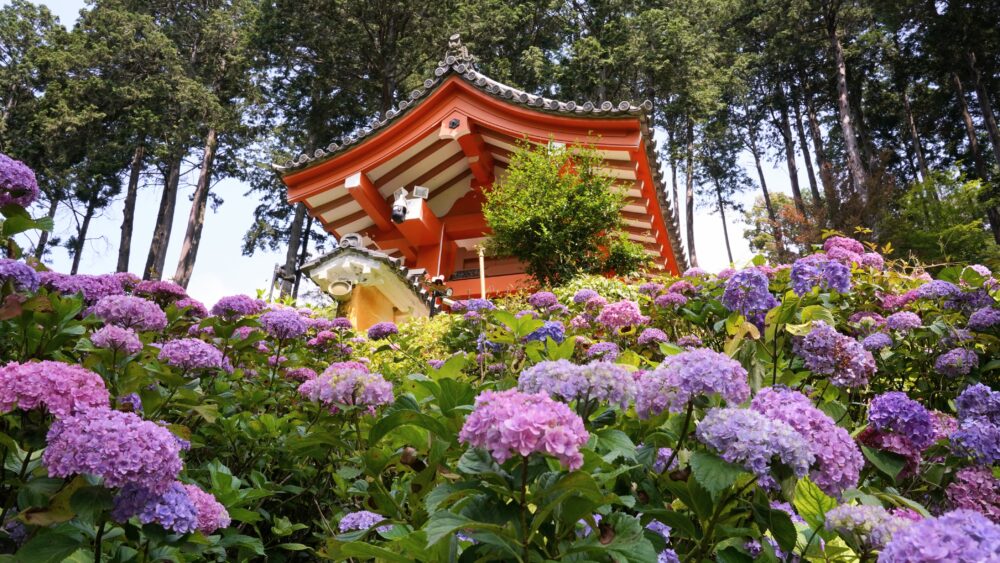
Upon entering the gate of Mimurotoji Temple, a large garden of approximately 6,000 square yard is to the right of the main path. This garden, called Yorakuei, is a strolling pond garden designed for leisurely exploration. On the west side of the garden, there is an enchanting display of about 10,000 hydrangeas of 50 varieties, whose blossoms burst into shades of pink, purple and white during the rainy season. In addition, 700 hydrangea pots are placed on the 60 stone steps leading up to the main hall, adding to the mystical atmosphere.
Information
Open hours
| Period | time |
|---|---|
| April 1st to October 31st | 8:30a.m. – 4:30p.m. (the reception close at 3:40p.m.) |
| November 1st to March 31st | 8:30a.m. – 4:00p.m. (the reception close at 3:10p.m.) |
Holidays
August 13th to 18th
December 29th to 31st
Entrance fee
| Period | Price |
|---|---|
| February to Mid-July | Adults 1000yen Children 500yen |
| Other than the above period | Adults 500yen Children 300yen |
Adress
Shigatani-21 Todo, Uji, Kyoto 611-0013
Link
Official Website
https://www.mimurotoji.com(Only Japanese text)
Umenomiya Shrine
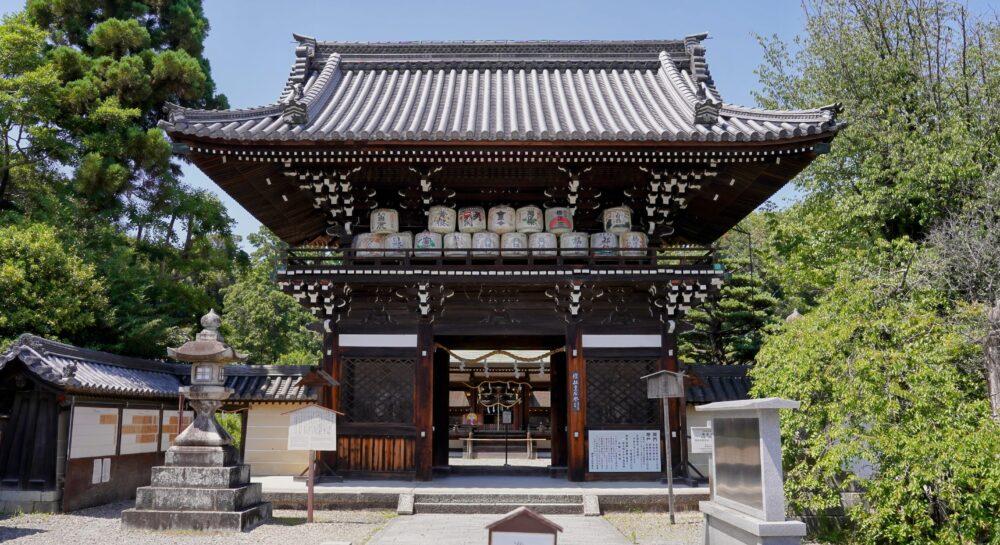
Umemiya Shrine is located just one train stop away from Arashiyama, Kyoto’s second most popular tourist destination. This venerable shrine, with over 750 years of history, pays homage to the deitySake no Kami( sake brewing) , and the goddess Konohana Sakuyahime, who is revered for her role in safe childbirth.
Shinsen-tei Garden, 120 varieties and 1300 hydrangeas
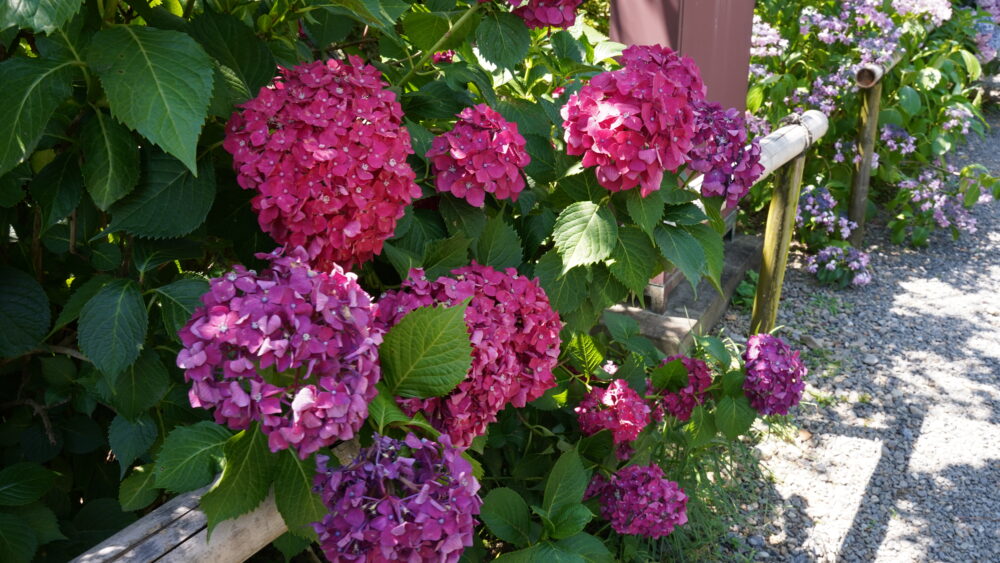
Umenomiya Shrine has about 12,000 square yard of a Japanese strolling garden called Shinsen-tei Garden. Centered around a large pond called Sayake-ike, it features a thatched-roof house in the middle of the pond and a Japanese-style building called Sanshuden, creating a peaceful atmosphere. The Umenomiya, which means plum trees in the palace, literally has plum trees, with 35 varieties and 400 trees planted. Hydrangeas are also famous, with 120 varieties and 1,300 plants. Hydrangeas bloom for a long period from mid-May to early July during the rainy season. At the same time of year, irises also bloom along the water’s edge.
Information
Open hours
9:00a.m. – 5:00p.m.
Entrance fee
Adults 600yen
Children 400yen
Adress
30 Umezu Fukenokawacho, Ukyo Ward, Kyoto, 615-0921
Link
Official Website
http://www.umenomiya.or.jp(Only Japanese text)
